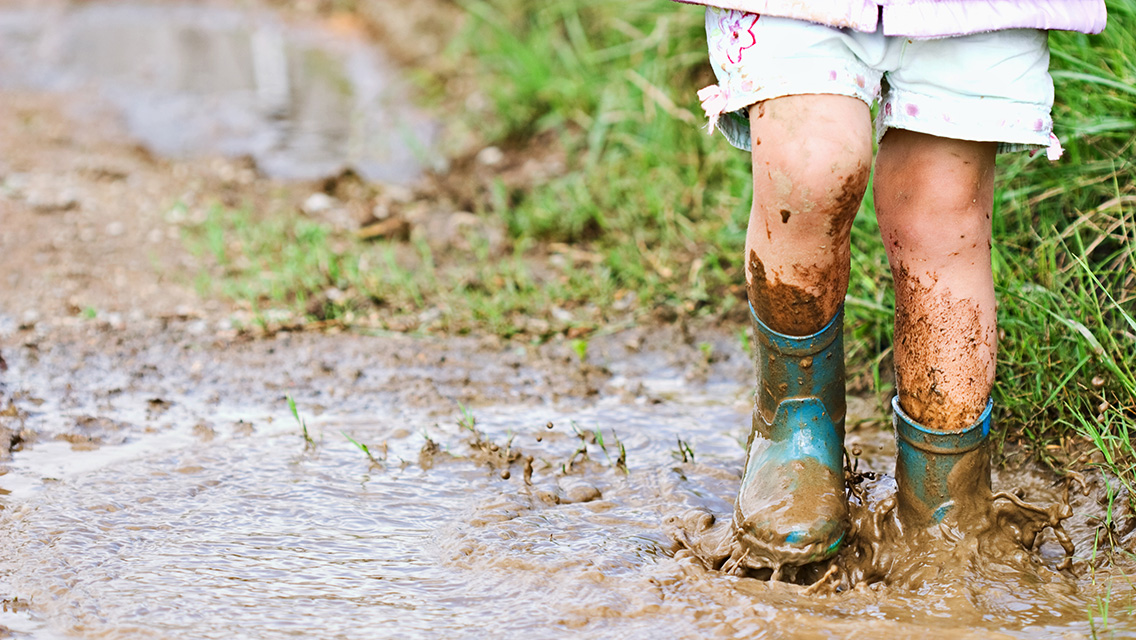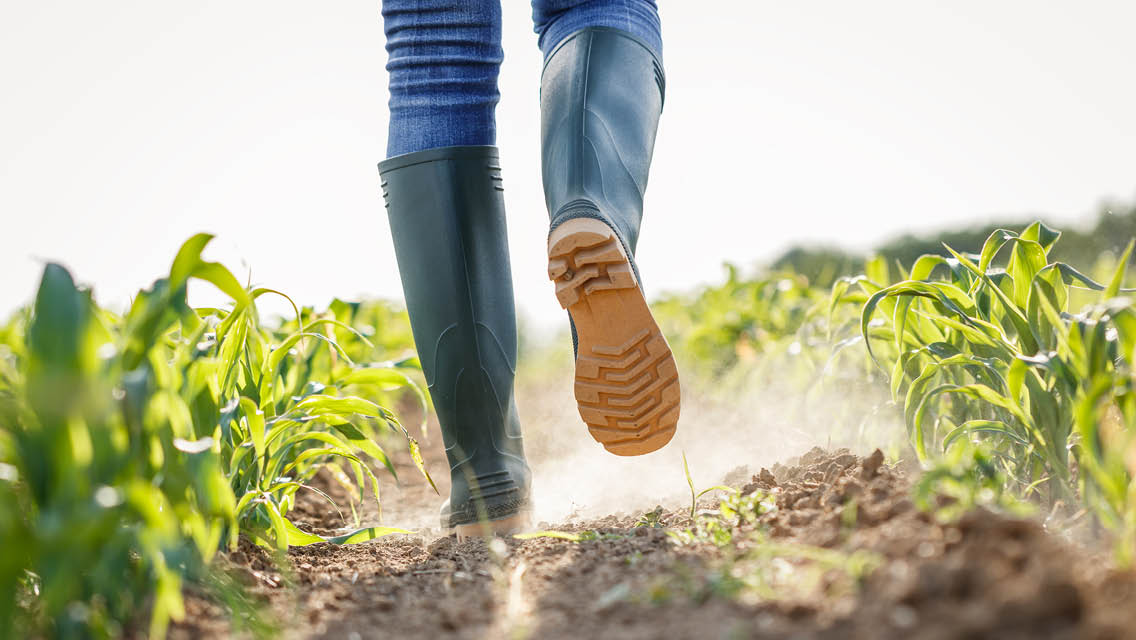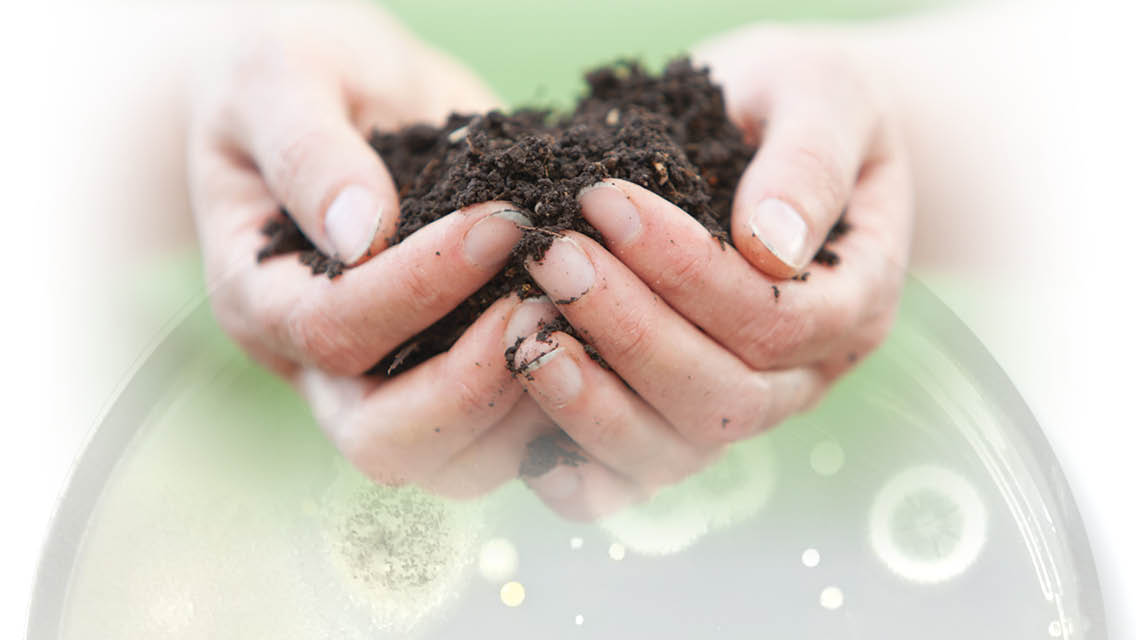Hand sanitizer dispensers are everywhere these days — in schools, gyms, and offices of all kinds. Most parents feel compelled to carry a bottle of the stuff on their person or risk appearing irresponsible. Antibacterial substances are added to children’s toys and adult workout clothes. Yet, from my point of view as an immunologist and microbiologist, this growing fear of microorganisms is unnecessary and alarming. In fact, my research has led me to believe that what we need today isn’t less dirt — it’s more.
Because of some common misunderstandings about how illness works, we’ve begun to mistake any and all microbes for public enemy No. 1. But if bacteria itself were the problem, we’d all be long gone by now.
The healthy human body harbors some 90 trillion microbes, outnumbering cells by about 10 to one. The majority of these organisms are beneficial; they compete with harmful microbes for space, aid in the function of the digestive system, and even produce factors to clot blood after an injury. Their presence keeps the immune system tuned and strong (a process I will explain later). Our societal obsession with destroying them is counterproductive to our well-being.
Problems with the war on bacteria were first identified in the 1980s by medical professionals who noticed a surge in the number of children diagnosed with asthma and food allergies. They hypothesized that the modern obsession with cleanliness, along with an increasing tendency to stay indoors in germ- and parasite-free environments, was leading to weaker immune systems and an increase in autoimmune disorders.
The formal name for this line of thinking is “the hygiene hypothesis.” I’ve spent 30 years teaching students about its scientific underpinnings, and demonstrating how reasonable exposure to dirt and germs is the shortest route to immune strength for just about everyone, but especially children.
The immune system is like an athlete: To become strong and adept, it needs training and practice. Hyper-sanitized environments deny it that opportunity and keep it sedentary and out of shape.
The best way to protect our health is to stabilize its foundations. And building a robust immune system is a whole lot easier than trying to kill every last germ. Here’s what you need to know to keep the right germs on your side, and to stop worrying about the dirt that won’t hurt you.
Rule 1: The Child Who Eats the Most Dirt Wins
Dismayed first-time parents often watch their crawling youngsters roll through life like little vacuum cleaners, sampling every piece of debris they can find. Much of this behavior is teething related, but its other, more critical role is to help stimulate development of the naive immune system.
Immune development starts in the thymus, a large gland located between the heart and the sternum of the child where “T” cells are produced. (This gland shrinks and largely disappears by puberty, which is why early immune training is so critical.) The first thing young T-cells learn is to differentiate between those tissues that belong to the body and those that don’t.
It’s as if the T-cells are learning to identify the uniform of the home team. The harmless organisms that find their way into the child’s system through those taste-testing forays provide recognizable examples of “away” team uniforms, thereby helping the system learn which cells to protect and which to vanquish.
This “self/nonself” discrimination is the basis for a well-trained immune system, one that does not attack its own cells. The absence of this ability is “autoimmune” disease, or “self-immunity,” where the body goes after its own tissues.
Upon recognition of an invader, T-cells multiply wildly. If all goes well, the invader is wiped out and the immune guardians go back to their original surveillance role, a little wiser for the next invasion.
Since every exposure provokes the multiplication of T-cells, the more frequent the exposure, the more powerful the standing immunological army, and the larger our immunological reserve. Over a lifetime of this challenge-and-response dynamic, a healthy person’s immune system grows so well-trained that it can knock out invasion attempts before a single symptom becomes noticeable.
Rule 2: An Idle Immune System Breeds Allergies
Modest illnesses help build the immune system; this is not true of allergies. In fact, allergies don’t protect us from anything; they just make us miserable. It can be helpful to recognize that allergies are simply a good immune response gone awry, a response that dates to a time when all humans were exposed to parasites on a regular basis.
The body has a set of reserve weapons for large invaders like parasites. Because a worm is too big to be wiped out by immune cells, Mother Nature’s compromise is the IgE cell (for “immunoglobulin E”), also known as the “flamethrower” cell: It fires caustic chemicals on a parasite to encourage it to move elsewhere. The flamethrower is a powerful weapon but not especially precise, and it damages surrounding cells. This is acceptable when the body is trying to rid itself of life-sucking parasites and has no alternatives, but when the IgE response is mounted against harmless substances like dust and pollen, the damage is unnecessary and unpleasant.
If you’re prone to allergies, it means you’re adept at the IgE response and would be at a strong selective advantage in environments where parasites are common. Unfortunately, in a relatively parasite-free society like the one most of us live in today, that advantage becomes a decided disadvantage.
Children raised in rural and farm environments tend to have fewer allergies.
One 2010 University of Nottingham study found that children infected with intestinal parasites are less likely to develop allergies. Of course, this is no reason to go in search of a tapeworm, but it does illustrate the connection I’m describing. In fact, other studies have successfully used parasites as a treatment for allergies.
It’s also known that children raised in rural and farm environments tend to have fewer allergies, even though (or perhaps because) their exposure to potential allergens like pollen, dust and animals is greater than that of children who grow up in urban environments.
What all of this suggests is that reasonable exposure to normal outdoor environments is likely to keep the immune system exercised and occupied. Giving it the opportunity to practice on largely harmless targets like dirt, dust, pollen and animal dander can help you avoid the risk that immune cells will become bored and start making mischief.
Rule 3: Stick With Plain Old Soap and Water
When healthy, our skin, hair and mucous membranes are normally covered with bacteria, and our bodies need a lot of this healthy flora to function properly. The good bugs compete with dangerous bugs for space and nutrients. That’s why a body with a good balance of natural flora makes a poor host for pathogens. And it’s why overzealously sanitizing our bodies and environments can be dangerous: It leaves pathogenic organisms no competition, and they grow.
In addition to killing the competition by over-cleaning, we make more trouble by medicating minor infections with antibiotics. This spurs unhealthy flora to mutate in the effort to protect itself. The worrisome bacterium MRSA, a staph infection that spreads through skin contact, is actually an acronym for “methicillin-resistant Staphylococcus aureus.” It’s now resistant to the last drug left to treat it, vancomycin.
The presence of drug-resistant superbugs like MRSA is enough to send anyone running for the strongest antiseptics, but this only compounds the problem. When it comes to fending off dangerous microorganisms, a healthy immune system and plain old soap and water are still your best defenses.
Hand washing physically removes dirt and germs from skin. The foaming action of the soap helps the process along by loosening debris and dissolving skin oils, and then friction helps rinse the germs away. Good hand washing doesn’t kill all bacteria or sterilize the skin, but it keeps the numbers manageable. It gets rid of the worst offenders and leaves a healthy balance of flora in its wake, one that gives your immune system a chance to flex its muscles.
Most antibacterial soaps and sanitizers contain triclosan, a dangerous chemical that’s inappropriate for everyday use.
Using antibacterial soaps, on the other hand, not only kills all the good bacteria, it leaves traces that make it harder for them to recolonize. Most antibacterial soaps and sanitizers contain triclosan, a dangerous chemical that’s inappropriate for everyday use. In hospital settings, it’s used in concentrations high enough to kill bacteria across the board, but the much lower concentrations found in products made for consumer use are just right for creating resistance to it. The mechanisms that bacteria develop to resist the triclosan in antibacterial soaps are identical to those that make bacteria resistant to other antibacterial drugs.
Finally, while cleaner hands undoubtedly transmit fewer bacterial illnesses, most common bugs are caused not so much by bacteria as by viruses. Antibacterial soaps (or toys, or mattresses, or any of the other places triclosan is found) have no effect whatsoever on the viruses that cause colds, flu and many intestinal upsets. Such products don’t slow the spread of such illnesses and do contribute to the problem of drug resistance.
Bacteria reproduce very rapidly, and they evolve quickly to adapt to their environment. We can kill some of them, but the ones that are left will be those that have the skill to resist our efforts. That’s why hand washing with simple soap and water is a better strategy for avoiding illness.
Rule 4: Let Minor Illness Run Its Course
Let’s face it: Illness is not fun, but it’s usually best to let small health challenges play themselves out. Listen to your body and it will tell you what it needs: rest and fluids. Employing a quick pharmaceutical fix that masks symptoms and allows you to carry on as normal (if a little more miserably) simply increases the likelihood of spreading the illness to others. It also delays your ability to mount a protective immune response.
Most of the unpleasant symptoms of an illness are the body’s way of evicting invaders. Signs of inflammation like swelling, redness, heat and pain indicate that the body has called in white blood cells to fight infection. Coughing, sneezing and runny noses mechanically expel disease agents from the respiratory tract. Similarly, diarrhea and vomiting quickly clear the digestive tract of germs and toxins before they’re absorbed by your system at large.
Nature has given you an incredibly elaborate and powerful immune system, but you have to train it well and exercise it often — with a lifetime of exposure to plenty of dirt and even the occasional bout of illness.
Suppressing these natural defenses with over-the-counter medications can actually slow the speed of recovery. The immune system can take care of most bugs on its own as long as it has the raw materials to do so: lots of rest, plenty of fluids and appropriate nutrition. That’s why, if you’re sick, one of the best things you can do is stay home and take care of yourself.
Nature has given you an incredibly elaborate and powerful immune system, but you have to train it well and exercise it often — with a lifetime of exposure to plenty of dirt and even the occasional bout of illness.
A healthy immune system is like a savings account for a healthy retirement. If you constantly make withdrawals and live with an overdrawn balance due to too much stress, too little rest, and too few nutrients, you’ll arrive at a point where you won’t have any reserves for a rainy day. But when you’ve built up a good balance in your health account with plenty of quality food, rest, exercise and play (preferably outside!), you’ll be ready for whatever is to come.
Antibiotics Running Into Resistance
Remember the old adage “What doesn’t kill you makes you stronger”? This is true for both humans and microbes. If you allow your immune system to do its job without chemical intervention, you’re far more likely to reach a point where you get sick rarely, if ever. My research has led me to believe that antibiotic therapy should be avoided unless a condition is life threatening. This may sound extreme, but remember, every time the body mounts an immune response, it develops immunological memory and gets stronger.
This doesn’t mean antibiotics won’t save your life when you really need them. If your trusted doctor believes you need an antibiotic, take it — and follow the instructions precisely for the entire prescribed course. When you start treatment with antibiotics, the first germs to die are those still sensitive to the drug; the more resistant ones can hold out longer. If you stop taking the antibiotic as soon as you feel better, you simply encourage the evolution of tough germs into even tougher forms. (What doesn’t kill them makes them stronger, too!) The net result: The next time you really need that drug, it may not work.
Keep in mind that many doctors simply prescribe antibiotics because they feel pressured to prescribe something. Make your doctor aware that you prefer a conservative approach to antibiotics. Then when he or she does feel one is necessary, you’ll know it really is.




This Post Has 0 Comments